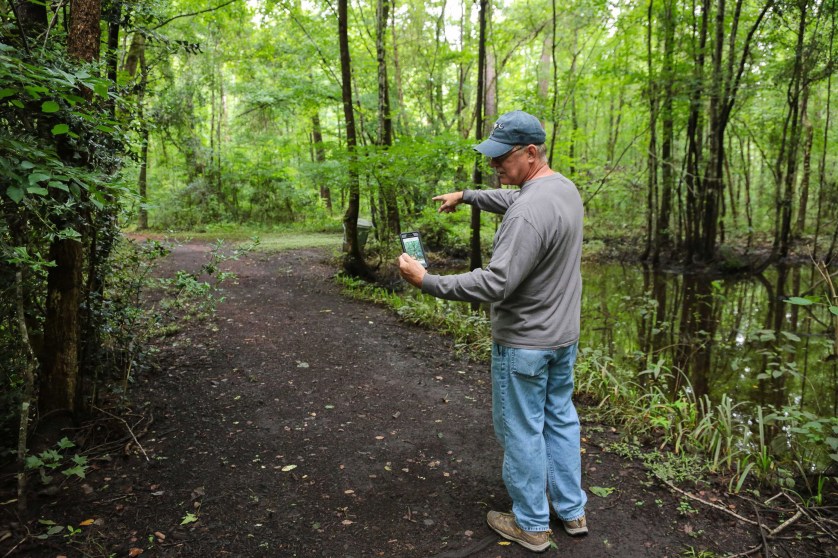Steady rains and flood water damaging Williamson Park











By Samantha Lyles
Staff Writer
slyles@newsandpress.net
With over 300 native plant and animal species and 1.5 miles of boardwalk suspended over the clear waters of Swift Creek, Williamson Park is a swampy natural wonder nestled in the middle of Darlington.
But when Mother Nature pelts down steady rain over several days, the rivers upstream send that water down to us and Williamson Park does what swamps do – it floods. And right now, the park’s tolerance for additional water is pretty low.
“Back when we had the thousand-year flood (October 2015), it didn’t do as much damage to the trails as this recent rain did,” says Williamson Park manager Eddie Lott. “Back then, we were in a dry spell and the creek was low … but we’ve had so much rain lately that the ground is saturated and a 4-inch rain brought it almost to the levels of the thousand-year flood.”
When that much traffic flows into Swift Creek, park trails can vanish beneath 8 inches of water.
It washes out sand beds, sweeps away mulch, dislodges timber markers and dumps slick debris on boardwalks. Flood water also brings an influx of trash; plastic bottles, soda cans, and even a stray Home Depot bucket were spotted on a recent park stroll. Lott says that back in 2015, they found everything from soccer balls to chair cushions to a garbage roll cart along the creek banks.
“In fact, when we went to move the roll cart, there was a raccoon living inside of it,” Lott recalls. “He was pretty upset with us for kicking him out of his new home.”
While such flotsam rarely causes serious harm to the park or its inhabitants (evicted raccoons notwithstanding), flood waters can permanently damage tree root systems.
While the hardy cypress and tupelo trees shrug off waterlogged conditions, Lott says that he and park caretaker Willie Hudson have found a number of maples and pines that simply fell over because their root systems were so saturated and weakened.
“You can tell which ones are going to go next because they start to lean,” Lott says. Near the center of the park, he gestures to a towering pine pitched at an ominous angle and predicts it will topple within the month. “When this one falls, it’s going to take down every tree in its path.”
Lott and Hudson work quickly to locate hazard trees, and even call in logging companies to remove the most dangerous ones. But these compromised trees could present a danger to guests, especially since park usage has increased since the coronavirus shutdown.
“The park has been used more in the past three months that it’s been in quite a while. We’ve seen mothers pushing baby strollers along the boardwalks,” says Lott. “We do want people to be aware, the biggest danger out here now is falling debris. As wet as it is now, a lot of trees with shallow root systems can fall over with just a little bit of wind.”
Washed-out trails can also expose tree roots, so park visitors are advised to watch their step or endure a muddy stumble.
“Since you’re out walking in nature, you know you need to be a little more careful,” Lott says.
